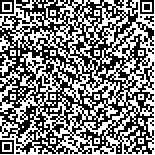李柄佑,王贺健,李树娟,等.重复经颅磁刺激对卒中后睡眠障碍患者前注意加工功能及睡眠质量的影响[J].中华物理医学与康复杂志,2024,46(4):312-316
扫码阅读全文

|
| 重复经颅磁刺激对卒中后睡眠障碍患者前注意加工功能及睡眠质量的影响 |
|
| |
| DOI:10.3760/cma.j.issn.0254-1424.2024.04.005 |
| 中文关键词: 卒中后睡眠障碍 重复经颅磁刺激 前注意加工功能 |
| 英文关键词: Stroke Sleep disorders Transcranial magnetic stimulation Pre-attention processing |
| 基金项目:河北省医学科学研究重点课题计划项目(20181166);河北省中医药管理局中医药科研计划项目(2022151) |
|
| 摘要点击次数: 3201 |
| 全文下载次数: 3541 |
| 中文摘要: |
| 目的 观察重复经颅磁刺激(rTMS)对卒中后睡眠障碍(PSSD)患者前注意加工功能及睡眠质量的影响。 方法 采用随机数字表法将60例PSSD患者分为观察组及对照组,每组30例,同时选取性别、年龄与患者匹配的30例健康受试者纳入正常组。2组患者均给予右佐匹克隆药物口服,观察组患者在此基础上辅以rTMS治疗,对其左侧背外侧前额叶皮质区(DLPFC)给予5 Hz高频磁刺激,对右侧DLPFC区给予1 Hz低频磁刺激,每天治疗1次,连续治疗14 d。于治疗前、治疗后3周时分别采用匹兹堡睡眠质量指数量表(PSQI)、汉密尔顿抑郁量表(HAMD)评估患者睡眠质量、抑郁情绪变化情况;同时对患者进行失匹配负波(MMN)检测,以评估其前注意加工功能改善情况。 结果 治疗后2组患者PSQI评分均较治疗前明显降低(P<0.05),并且观察组PSQI评分[(6.30±2.96)分]亦显著低于对照组水平(P<0.05);治疗后观察组HAMD评分[(17.93±5.73)分]较治疗前及对照组均明显降低(P<0.05),而对照组HAMD评分治疗前、后无显著变化(P>0.05)。治疗后观察组MMN波幅较治疗前及对照组均显著增高(P<0.05),潜伏期较治疗前及对照组均明显缩短(P<0.05),对照组MMN波幅及潜伏期治疗前、后均无显著变化(P>0.05)。 结论 PSSD患者普遍存在前注意加工功能受损及抑郁情绪,右佐匹克隆联合rTMS治疗能显著改善PSSD患者前注意加工功能及睡眠质量,减轻抑郁程度,该联合疗法值得临床推广、应用。 |
| 英文摘要: |
| Objective To explore any effect of repetitive transcranial magnetic stimulation (rTMS) on pre-attention processing and the sleep quality of persons with post-stroke sleep disorders. Methods Sixty stroke survivors who were sleeping poorly were randomly divided into an observation group and a control group, each of 30. Thirty healthy counterparts matched for sex and age formed a normal group. Both groups were given oral dexzopiclone, while the observation group was additionally provided with 14 days of daily rTMS applied over the left dorsolateral prefrontal cortex (DLPFC) at 5Hz and over the right DLPFC at 1Hz for 660 pulses at each side. Before and 3 weeks after the treatment, both groups were evaluated in terms of sleep quality using the Pittsburgh Sleep Quality Index (PSQI) and for depression using the Hamilton Depression Rating Scale (HAMD). Pre-attention processing function was also assessed using mismatch negativity (MMN). Results After 3 weeks of treatment, the average PSQI scores of both groups had decreased significantly, but that of the observation group was then significantly lower than the control group′s average. The average HAMD score of the observation group had also decreased significantly compared to before treatment and compared to the control group′s average. Indeed, the control group′s average HAMD score, MMN amplitude and MMN latency had not changed significantly. In the observation group both the amplitude and the latency of MMN had shortened significantly. Conclusion Persons sleeping poorly generally have impaired pre-attention processing and may be depressed. Oral dexzopiclone combined with rTMS can significantly improve their pre-attention processing and sleep quality, as well as relieving depression. Such therapy is worthy of clinical promotion and application. |
|
查看全文
查看/发表评论 下载PDF阅读器 |
| 关闭 |